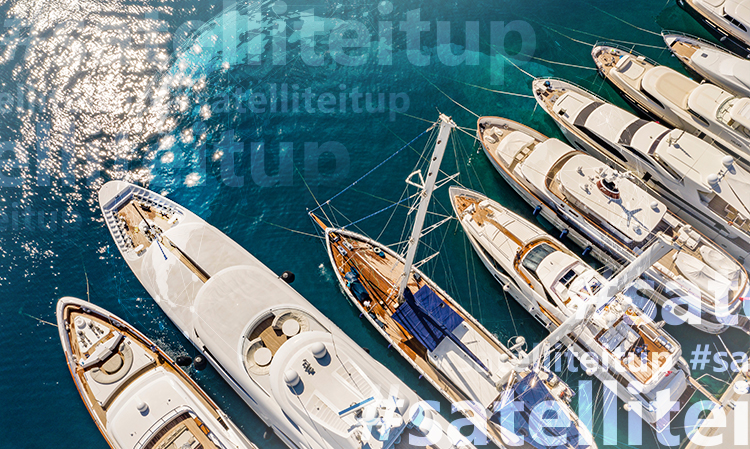The demand for connectivity in the yachting sector has been experiencing a significant rise. Recent studies indicate that the global yacht market is projected to reach USD 13.56 billion by 2030, with an anticipated growth rate of 5.4% from 2022 to 2030. Business users onboard yachts expect network access as a ‘given’ no matter where they are at sea to communicate with their teams via email and messengers, monitor KPIs via corporate CRM, and engage in video conference meetings with partners. Meanwhile, the expectations of leisure users continue to escalate. They seek high-quality infotainment and fully immersive experiences such as controlling the onboard climate, music, and lighting via their smartphones.
And, both business and leisure users are willing to pay a premium for this seamless maritime telecommunications experience onboard their yachts. Connectivity has become critical, a ‘must’ – not a luxury. Technological advancements foster this trend. The most common uses for connectivity on a yacht continue to be:
- Real-time communication: Owners, guests, and crew rely on connectivity for voice calls, text messages, and email communication
- Entertainment: Connectivity enables streaming of multimedia content like movies, music, and TV shows, providing a high-quality onboard entertainment experience
- Monitoring and security: Onboard security systems, remote surveillance, and tracking rely on connectivity to function effectively
- Operational management: Connectivity is essential for monitoring onboard systems, conducting remote diagnostics, and optimising the operational performance
Vessel operators will likely face the need to upgrade their connectivity solutions and maritime satellite communications systems soon. The good news is that the latest Superyacht Connectivity Report reveals that 74% of yacht owners expect to increase their satcom budgets by 25% by 2025.
Digitalisation & Maritime Satellite Services
VSAT maritime services were the go-to solution for meeting these requirements. They’ve long been favoured for their reliability and expansive coverage through the GEO network. As the maritime landscape evolves, traditional VSAT subscriptions, typically capped at 2 Mbps, are no longer sufficient to support the demands of a modern, digitally driven vessel. LEO connectivity offers 100 times the speed of GEO Ka- and Ku-band networks. Due to closer proximity to Earth, LEO satellites channel signals with lower latency, which is a key factor for the operation of real-time applications like video conferencing and online gaming.
It’s worth noting that full licensing for LEO maritime technologies in the territorial waters of each seafaring nation may take some time. As a result, a seascape where vessels equipped with both VSAT and LEO technology coexist is likely in the near future.
The current catchphrase is ‘hybrid connectivity’ and it means onboard connectivity systems can seamlessly rotate among three types of services: Ka- or Ku- band VSAT (Very Small Aperture Terminal) from geostationary (GEO) satellites or low-earth orbit (LEO) services used as a primary channel; GEO based L-band applied as a back-up, and cellular networks as means to stay connected when vessel is close to the shore.
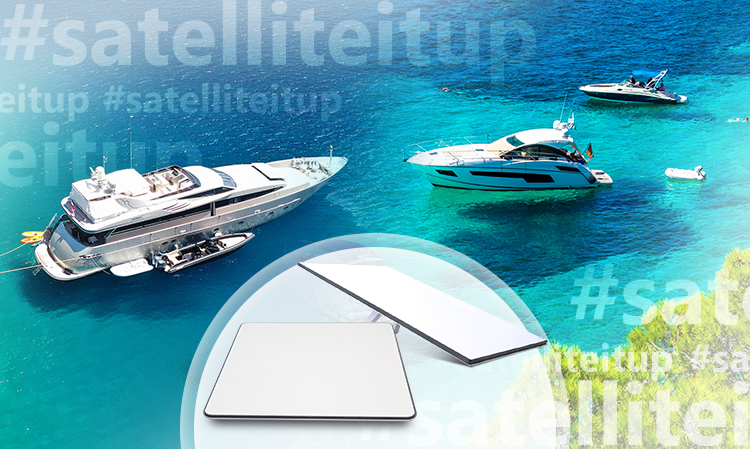
Starlink: Browse at sea like at home
LEO satellite connectivity offers an exciting paradigm-shifting opportunity for the yachting sector. Powered by the world’s largest constellation of low-earth orbit (LEO) satellites, Starlink delivers high-speed network coverage of up to 220 Mbps while at sea.
With Starlink on board, leisure users can stream movies, play online games, and stay connected through their favourite social media applications. Business-minded travellers can benefit from reliable maritime satellite communications anytime, aligning with the “work from anywhere” concept widely embraced ashore. Utilising Starlink, they can make VoIP calls, join video meetings, and access corporate cloud networks while enjoying their sea adventures. With no long-term commitment, customers can avail themselves of month-to-month plans and even pause the service as needed.
Starlink is currently available in two modifications: Starlink Flat HP and Starlink V4.
Starlink Flat HP: Advanced connectivity throughout your journey
The original Starlink Flat HP, introduced to the market in 2023, enables yacht owners, crew, and guests to experience up to 220 Mbps speed while underway from one destination to the next.
With a rugged and simple design, Starlink supports heavy-traffic consuming applications without losing its high-speed functionality. End-to-end encryption enables confidentiality of user traffic over a single portal. Moreover, there is no long-term commitment to Starlink’s service. Customers can avail month-to-month plans, and even put the service on pause to meet their evolving connectivity needs.
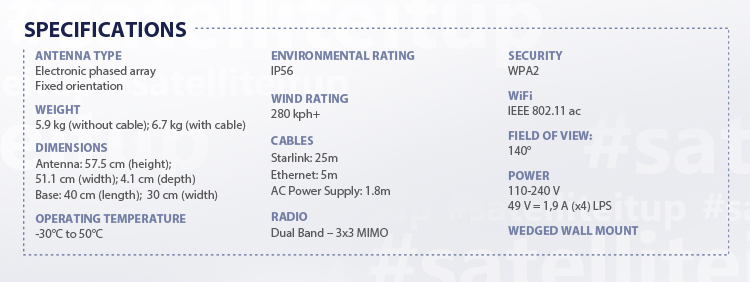
Starlink V4: Reliable Communications On-the-Pause
Starlink V4 released in 2024 as a more cost-effective alternative to the Flat Pro. Unlike its predecessor, it can only guarantee access to the network when the yacht is stationary. In other words, while saving on the hardware cost, users should be ready to compromise on their high-speed browsing time.
Once the yacht is anchored or at the dock, yacht passengers and crew members can enjoy the best of the Starlink network without any exceptions. In addition, the new model has an IP67 waterproof rating and comes with a number of technical improvements, such as WiFi 6 and two ethernet LAN ports for local network interconnections.
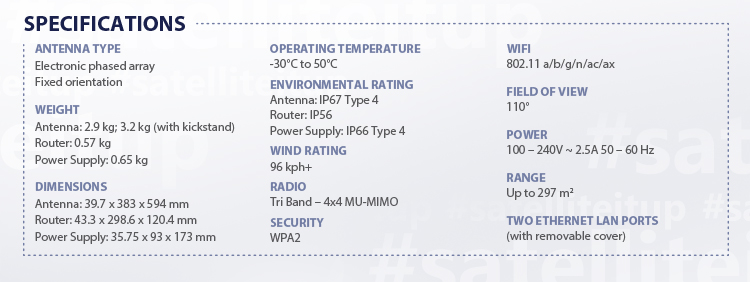
Xpand Portfolio: Hybrid LEO/GEO solution for the best user experience
For the best connectivity onboard a yacht, Starlink alone is not sufficient. It has to be backed up by an MSS maritime terminal that could offer a dependable channel for communication should the main network be unavailable. Moreover, as the yachts get closer to shore, it makes more sense to switch to GSM.
IEC Telecom Group offers Starlink services via its Xpand Portfolio. This LEO/GEO hybrid satcom solution has been designed to offer the best user experience over satellite, whether on a high-speed LEO network or a narrow-band L-band back-up, as well as geared to provide seamless LTE failover in coastal areas.
Network management is performed via the OneGate system. The smart terminal blends several networks under one umbrella and ensures that at each given moment, traffic is routed over the most cost-effective channel.
Network performance can be monitored via the OptiView dashboard. Key features include:
- Full visibility of your satcom links: IEC Telecom is committed to providing its customers with full visibility of their network assets. Whether it is an L-Band, GEO VSAT, or LEO subscription, you can get all the account information and monitor the current status of the link.
- Advanced filtration management: Control network filters remotely and disable any specific profile with immediate effect. Apply a more restrictive mode or ease limitations based on the situation or consumption level.
- History of bandwidth usage: Get a detailed bandwidth usage graph per network with clear insight into the disruption of consumption between vessel-critical operations and guest browsing.
- Usage details report: OptiView dashboard can provide complete consumption details based on visited websites and applications as well as the blocked requests on-site and onboard.
- Credit limit management: Monitor the usage over critical lines and set notifications for data consumption. You can even configure a specific threshold or credit limit that will result in the suspension of the line as soon as the limit is reached.
- Guest voucher monitoring: Gain full visibility over the vouchers being used onboard, including statistics on the validity, the data consumption, and the remaining data bundle per user.
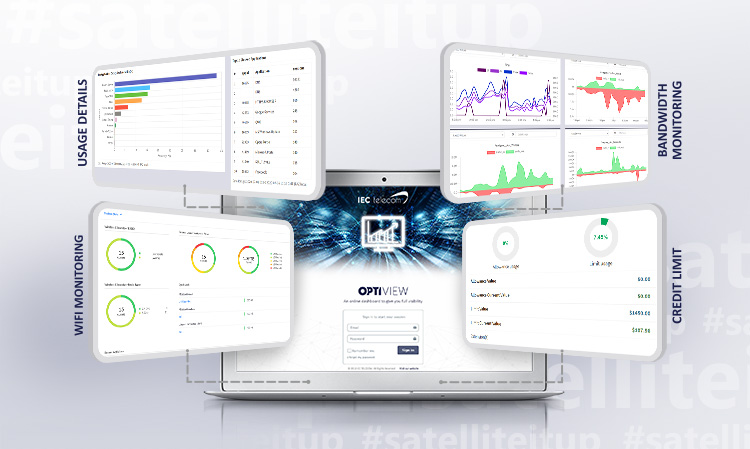
Maritime Cybersecurity: Onboard a yacht
The availability of higher bandwidth onboard translates into a higher risk of cyber threats – as crew members and guests are increasingly dependent on always-on applications. While cyber-attacks that take place ashore are usually countered with multiple layers of protection common for enterprise and home networks, protection of vessels has always been less solid due to the limited use of the onboard internet.
A printer or a gaming console connected to onboard WiFi can serve as a gateway to hack a yacht’s network, exposing critical information and invading the privacy of personal data.
IEC Telecom can support yacht owners by offering a wide range of maritime cybersecurity options within its bespoke OptiShield service line:
- Advanced threat protection: Integration between the end-point antivirus and the next-generation firewall provides native end-point visibility, compliance control, vulnerability management, sandbox analysis, and automation capabilities; real-time investigation of incidents helps minimise impact by automatically quarantining suspicious end-points.
- Secure remote access: End-point security solutions utilise SSL and IPSec VPN technologies to create safe access to corporate networks and applications; two-factor authentication can be added for an extra layer of security.
- Anti-exploitation protection: OptiShield prevents vulnerabilities from being exploited by analysing downloads in real-time and leveraging a cloud-based global threat intelligence platform to protect the onboard network against emerging threats.
- Ransomware protection: The antivirus solution rolls back changes made by malicious programmes and restores the end-point to a pre-infection state.
- Dashboard visibility: An intuitive dashboard enhances visibility and control over each vessel’s software and hardware inventory.
- 24/7 cyber response team: OptiShield’s advanced software is operated by a dedicated remote IT team, providing expert guidance.
